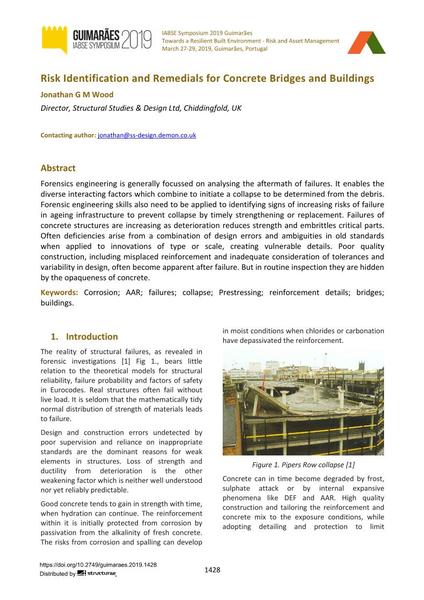Risk Identification and Remedials for Concrete Bridges and Buildings

|
|
|||||||||||
Détails bibliographiques
| Auteur(s): |
Jonathan G. M. Wood
(Director, Structural Studies & Design Ltd, Chiddingfold, UK)
|
||||
|---|---|---|---|---|---|
| Médium: | papier de conférence | ||||
| Langue(s): | anglais | ||||
| Conférence: | IABSE Symposium: Towards a Resilient Built Environment Risk and Asset Management, Guimarães, Portugal, 27-29 March 2019 | ||||
| Publié dans: | IABSE Symposium Guimarães 2019 | ||||
|
|||||
| Page(s): | 1428-1435 | ||||
| Nombre total de pages (du PDF): | 8 | ||||
| DOI: | 10.2749/guimaraes.2019.1428 | ||||
| Abstrait: |
Forensics engineering is generally focussed on analysing the aftermath of failures. It enables the diverse interacting factors which combine to initiate a collapse to be determined from the debris. Forensic engineering skills also need to be applied to identifying signs of increasing risks of failure in ageing infrastructure to prevent collapse by timely strengthening or replacement. Failures of concrete structures are increasing as deterioration reduces strength and embrittles critical parts. Often deficiencies arise from a combination of design errors and ambiguities in old standards when applied to innovations of type or scale, creating vulnerable details. Poor quality construction, including misplaced reinforcement and inadequate consideration of tolerances and variability in design, often become apparent after failure. But in routine inspection they are hidden by the opaqueness of concrete. |
||||
| Mots-clé: |
ponts bâtiment
|
||||
